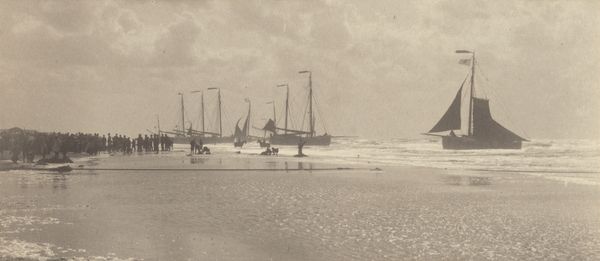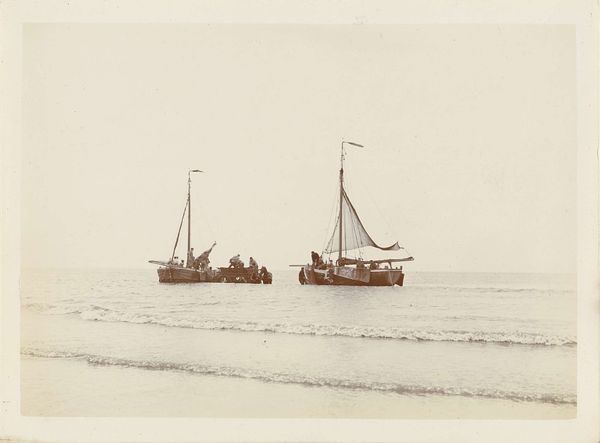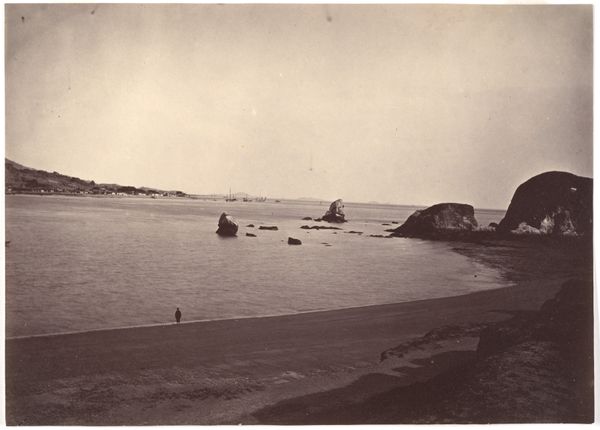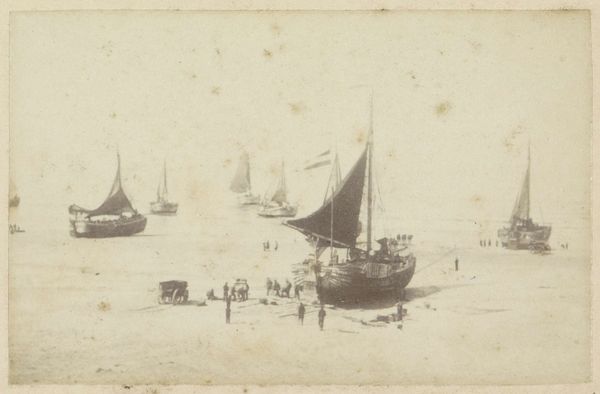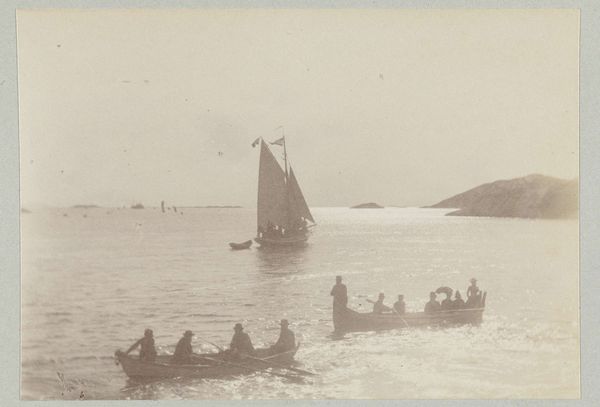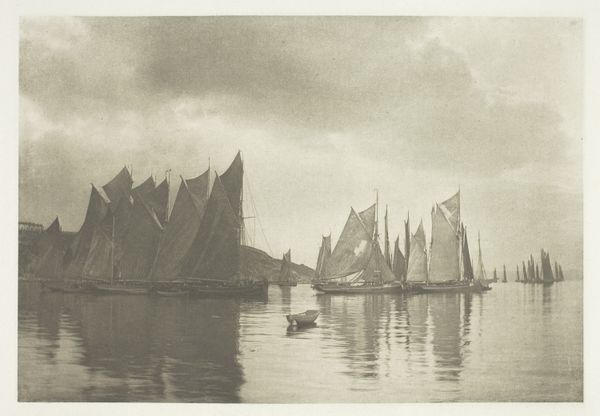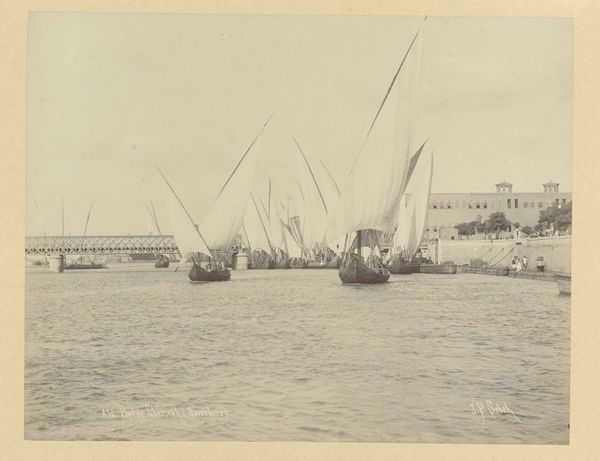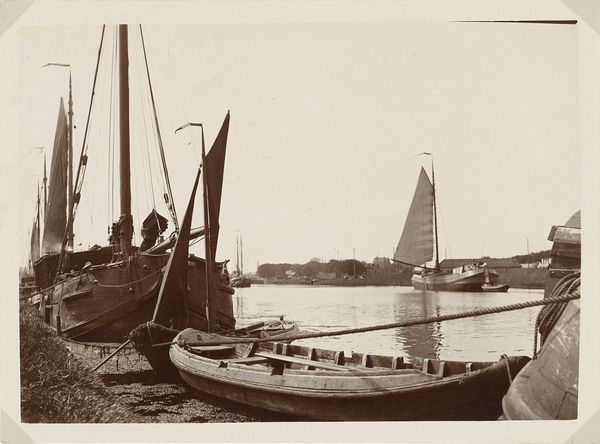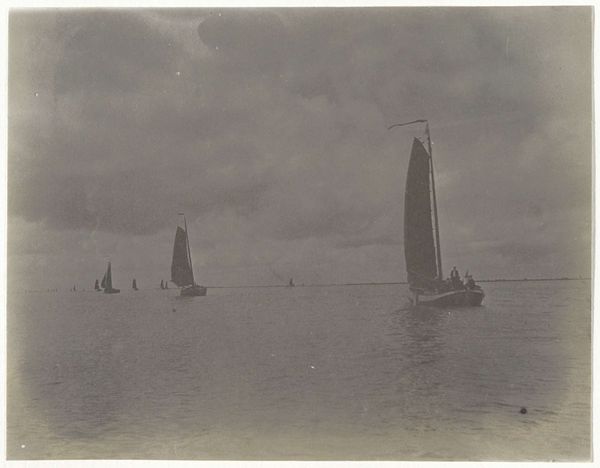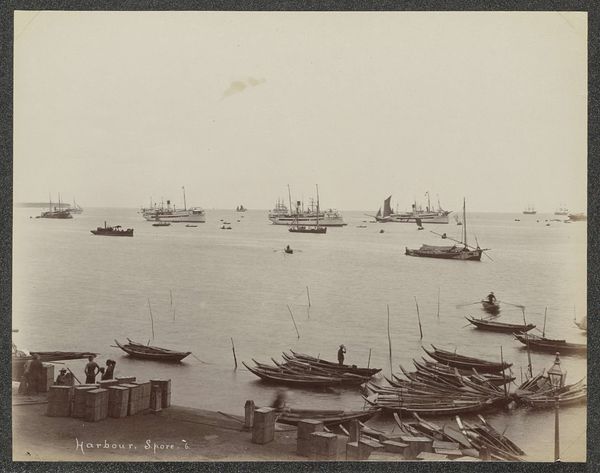
daguerreotype, photography
#
boat
#
asian-art
#
landscape
#
daguerreotype
#
outdoor photo
#
outdoor photography
#
photography
#
outdoor scenery
#
genre-painting
#
sea
Dimensions: Image: 7 5/16 × 10 11/16 in. (18.6 × 27.1 cm)
Copyright: Public Domain
Curator: This daguerreotype by John Thomson, titled "Fishing Boats going out Macao," dates back to 1869. The scene is serene yet melancholic. Editor: It has this misty, faded quality that evokes such a quiet sense of longing, like a memory viewed through time. The composition really draws me to the small figures in the foreground. What can you tell me about Thomson's process here? Curator: Well, creating a daguerreotype in the mid-19th century wasn't simple. Think about coating a silvered copper plate with light-sensitive chemicals, exposing it in a camera, then developing the latent image with mercury vapor! And imagine the sheer impracticality of hauling all of that equipment around the coast of China! This medium had specific social implications for the way this image was produced and consumed at the time. Editor: Absolutely. It underscores the incredible amount of labor involved. Every gleaming sail and shadowy figure in the foreground are traces of this meticulous craft. I'm particularly struck by how Thomson renders the boats; these don't seem to be Western ships... Curator: Those are junks, traditional Chinese sailing vessels. They were central to Macao's fishing industry and, more broadly, to its identity as a port city mediating between cultures. These junks bear symbolic weight that goes beyond simple fishing. In much the same way that sea travel became the vessel for mythologizing human existence, in Eastern and Western traditions. The boat is always so much more than a boat. Editor: Interesting! Their distinctive sails echo through Asian art and commerce as well. It makes me wonder, what role did this image play in shaping Western perceptions of China? It almost feels like a staged tableau. Curator: The very act of photographing became an intervention and affected how people perceived Macao, turning it into an artifact of the exotic Other in the Western imaginary. But on the other hand, it preserved a very crucial record of history that remains for people around the world to explore. Editor: I see how these objects became vessels themselves, circulating not only commodities but also carefully curated visions of a world increasingly knit together by trade. Curator: Precisely, and a world transformed by image making. Photography's material culture had such profound and lasting impact. Editor: Thank you, I've walked away with so much to reflect on. Editor: Indeed!
Comments
No comments
Be the first to comment and join the conversation on the ultimate creative platform.
